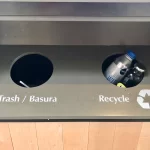Part 1 – Plastic Production & Recycling
Introduction
When crude oil prices rise, so do the costs of many everyday items, but few materials are as directly impacted as plastic. From packaging to manufacturing components, plastics derived from petroleum are subject to the ups and downs of the global oil market. Understanding this relationship is crucial for any business that relies on plastic production.
The Crude Oil–Plastic Connection
Plastics are typically produced from petrochemical feedstocks like ethylene and propylene, both of which are derived from crude oil or natural gas. This makes the cost of virgin plastic tightly linked to the price of crude oil. When oil prices spike, the cost of producing new plastic materials increases accordingly, impacting manufacturers, suppliers, and consumers alike.
Economic Impacts on Manufacturers
Companies that depend heavily on plastic for packaging, parts, or products may find themselves at the mercy of oil price volatility. A surge in crude oil prices can lead to sudden and significant increases in production expenses, affecting profit margins and pricing strategies.
Conclusion
Monitoring crude oil trends is more than just a concern for energy traders, it’s a smart move for any business using plastic. Staying informed can help businesses anticipate cost changes and explore alternative materials like recycled plastics.






